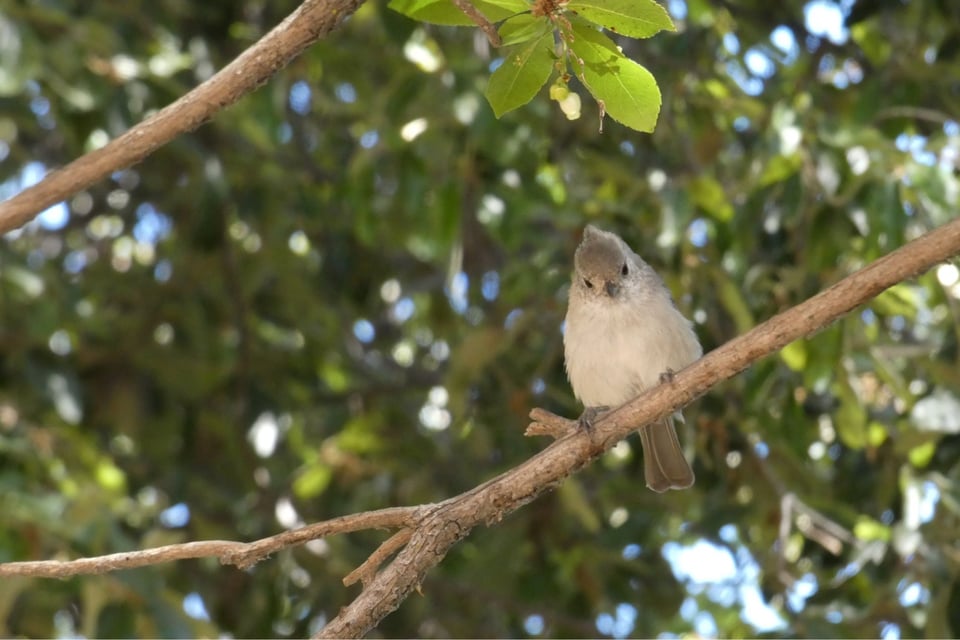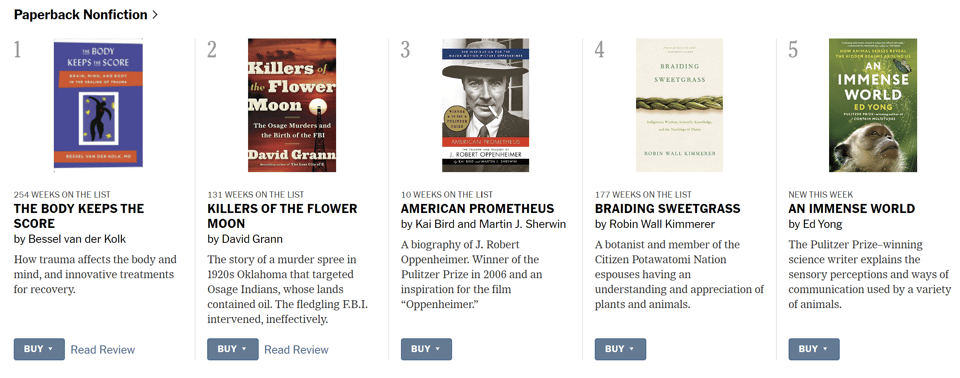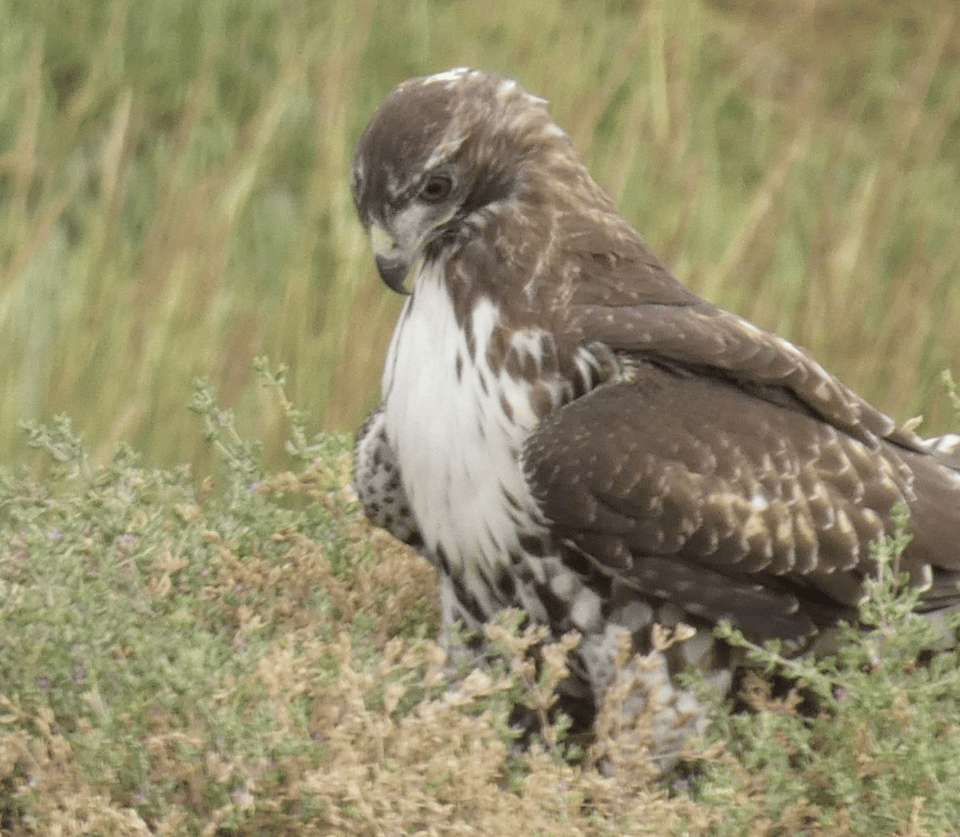The Ed's Up - Spark Region

I guess I'm a birder now
Many birders have a particular species that ignited their interest in birding—a spark bird. I have more of a spark region. When Liz and I moved from D.C. to Oakland in May, we walked into our new backyard to find an Anna’s hummingbird sitting in an adjacent tree. A few days later, the amazing writer Jenny Odell lent me a copy of her Sibley field guide, which she had annotated with colored stickers to denote the most likely backyard birds. And there were so many! I’ve seen 25 species while walking our dog, and 14 from my office window. I’ve taken to leaving the Merlin song-identification app running while I work, and picking up the binoculars if it detects anything new; that’s how I saw my first oak titmouse. Birdsong is omnipresent in our neighborhood, and I’ve started identifying species by ear—a skill that completely changes the feeling of stepping outside your door in the morning. Mockingbirds are everywhere. Recently, three juvenile Cooper’s hawks alit on a nearby telegraph post. A white-tailed kite patrols the streets. Hummingbirds do courtship dives over our backyard. I didn’t find birding so much as it found me.
For decades, I’ve learned about birds through my writing, looked for them while hiking, and photographed them when I had a camera at hand—all very opportunistic and casual. But this week, I started going on trips for the express purpose of watching birds, which felt like crossing the Rubicon that separates ‘bird-interested normie’ and ‘birder’. So I asked people on Bluesky (the best of the Twitter replacements) to offer their best tips for a recently fledged birder. Here, with enormous gratitude, is a selection of their advice. (I left out anything specific to the Bay Area or to photography. Apologies to anyone not specifically name-checked; a lot of you chimed in!)
Finding. Pay attention to your most common neighborhood birds: It “trains your brain at how to look at birds so when something unfamiliar shows up, you’ll automatically take note of field marks,” Birder K said. (The same applies to sound.) “Go to a few places regularly,” said Kim Cressman, to understand how the birdlife changes with the seasons; if possible, pick places with a variety of habitats. Note when visiting migrants arrive. Go out at sunrise or sunset. If you have a yard, wildflowers, birdbaths, and hummingbird feeders are good attractants. If you’re on the coasts, try pelagic birding. If you travel, buy local field guides. Use the maps on eBird.com to find local hotspots.
Prepping. Spend time browsing field guides (I adore David Sibley’s) or Merlin’s in-built encyclopedia. “Put a bird guide next to the toilet,” Cam said. Invest in good binoculars, and maybe get a small pair (or a scope) that you can have around you all the time. “The best scope is the one you have with you,” Alex Holland said. (I love this site that offers identification quizzes based on region, taxonomic group, and rarity; the pictures also disappear on a timer, which is great for training rapid field-mark memory.)
Identifying. Colors and patterns are obviously useful, but so is bill shape. Note a bird’s behaviors: its posture, movements, wingbeat patterns, distinctive tics like tail-flicking, foraging style, pace, vibes. Learn contextual cues like the habitats, times of day, or plants that certain species prefer. "Alarm calls" can give away the presence of raptors, Rebecca Gelertner said. “If you see something you can't place, take the photo,” TKarney said; bad ones are good enough for the iNaturalist app. I have a Popsocket on the back of my phone, which lets me hold it on the back of a hand that’s holding binoculars; I can then leave Merlin running for sound-ID, which complements whatever I’m seeing. More importantly, be patient: “A huge part of identification is essentially vibes-based,” Jacob Kramer-Duffield said. “Eventually it becomes clear just how a given bird is, which is emergent. Take time to just watch them being themselves.”
Flocking. At least occasionally, go birding with other people. “One can keep an eye on a bird,” said Owlice, while others futz with their tech. Experienced birders will teach you a ton: Sean Kennedy sought assisted and senior living communities that do birding walks “to learn from seniors with decades of experience.”
Enjoying. Everyone birds in their own way. I enjoy the meditative aspect: being outdoors, focusing on my senses, and “cultivating that space of deeper attention,” as Andy Karlson put it. “This starter stage of birding will be over sooner than you think and in some ways, it’s the most fun,” Jennifer W. Hanson said.
Faceplanting. “You will make some bad IDs,” K. P. Bara said. “Like comically bad. It's fine, we've all done it.” Prepare to be inordinately excited over what turns out to be a robin or a house finch. Mockingbird and starling calls will trip you (and sometimes Merlin) up. “Get familiar with female red winged blackbirds,” Lyndsay said.

Book news
An Immense World has once again re-appeared on the New York Times bestseller list, at #5 in the paperback nonfiction chart. Thanks as ever to everyone who has supported this book, and to Barnes and Noble for picking it as their nonfiction book of the month. I've also hinted at exciting book news to come and I hope to have some to share by the next newsletter.
Book recommendations
If I Survive You, by Jonathan Escoffery
A set of interlocking stories about a Jamaican-American family trying to find their place in Miami, and dealing with varied flavors of racism, poverty, and family strife. It’s nuanced, keenly observed, and very funny.
Immortal Hulk Omnibus, by Al Ewing
This… well… hulking anthology come out last month and collects one of the best comics runs of the last decade, from one of the best writers in modern superhero comics. Caution: You need super-strength to actually lift it.
From previous newsletters:
Chain-Gang All-Stars, by Nana Kwame Adjei-Brenyah
No One is Talking About This, by Patricia Lockwood
Nightcrawling, by Leila Mottley
Trust, by Hernan Diaz
The Furrows, by Namwali Serpell
Life on Delay, by John Hendrickson
The Swimmers, by Julie Otsuka
Weathering: The Extraordinary Stress of Ordinary Life in an Unjust Society, by Arline Geronimus
Pieces Worth Reading
“In schools across the US, trans children are running track, hitting home runs, fumbling a catch, or mastering a stroke, and it’s fine.” I loved Let Them Play, SELF magazine’s package of stories about trans kids and sports. (Start with this piece by Frankie de la Cretaz.) It’s not only written and edited entirely by queer and trans people, but is also steadfast in its refusal to let extremists dictate the terms of engagement. It’s a study in how portraying normal lives can be radical and subversive. It's an antidote to the problem Niko Stratis writes about here: “Trans people are everywhere in the news—we’re just never real in the stories told… We are always the topic, rarely the voice.”
(Along similar lines, I recommend: Marisa Kabas’s piece on store owners who are still flying pride flags after Lauri Carleton was murdered for hers; Evan Urquhart’s and Soleil Ho’s reporting on the NYT’s sketchy trans coverage; and the Trans Journalists Association’s style guide.)
Just before leaving The Atlantic, I was interviewed by Hanna Rosin for Radio Atlantic about my story on fatigue, long COVID, and ME/CFS. That episode (and a transcript) is now up.
Contrary to popular punditry, there's still a pandemic afoot, and it's still worth avoiding infection. If you want solid reporting on COVID, I’d recommend Betsy Ladyzhet’s COVID Data Dispatch newsletter. If you're after analysis that speaks truth to power, and looks at the forces that got us here, check out the Death Panel podcast from Beatrice Adler-Bolton, Artie Vierkant, Phil Rocco, Jules Gill-Peterson and Abby Cartus.
Annalee Newitz and Charlie Jane Anders joyfully deconstruct Silicon Valley’s weird takes on “free speech” and its even stranger readings of 1984.
"It is a story that reveals the impossibility of being a moral person in a fundamentally immoral system." Clint Smith on Josiah Henson, the man who inspired Uncle Tom.
“My deepest shame rests with the unspeakable number of podcasts I mainlined, the sheer volume of hours lost that I will never get back listening to her and her fellow travelers who are now in open warfare against objective reality.” Naomi Klein (the credible one) writes about being constantly mistaken for Naomi Wolf (the absurd one).
The Daily Tar Heel, a student newspaper, created an unforgettable front page in the wake of a fatal campus shooting. NPR talks to Emmy Martin, the paper’s EIC.
“We don’t want to be seeing people on vacation when we’re trying to pull our lives back together.” Taylor Weik shows how colonialism led to the Maui fires and is now jeopardizing the recovery process.
“Sometimes you recognize immediately the magnitude of something special that you’ve found.” Katrina Miller on an octopus nursery in the deep ocean.
“I love today’s poem because it is a kind of anti-poem. It refuses meaning, and yet, in such refusal, it still makes meaning possible.” A beautiful essay by Devin Kelly about seeing metaphor in nature, but also resisting such connections.
My former editor Sarah Laskow and I had a running joke about whether gazpacho is just salsa, and she finally turned it into an actual piece.
On social media
Twitter was already a joyless hell before it was bought by an intemperate far-right-activist but its continued descent into disinformation, bigotry, and actual Nazism means that I will rarely, if ever, be using it. I say that without self-righteousness or satisfaction: For all its problems, Twitter was and is an important place for many communities and isn’t easily replaced. Facebook is also terrible. Threads is non-functional. Mastodon is unappealing to me.
The only social network I’m using is Bluesky, which has its problems but is the closest thing that exists to Twitter-when-it-was-actually-fun-and-useful. It is sadly (mercifully?) still in a closed, invite-only beta, but when it inevitably opens, if you want to find me somewhere, it’ll likely be there.
But also, we could go watch some birds instead.
Future speaking events
Come say hi; please wear a mask.
Sep 12 – National Writers Series in Traverse City, Michigan. I’ll be talking about An Immense World.
Sep 15 – University of Notre Dame in Notre Dame, Indiana. I’ll be talking about empathy and equality in science writing.
Oct 4 – Princeton University, for their Environmental Humanities and Social Transformation Colloquium. I’ll be talking about An Immense World.
Oct 14 – Wheeler Centre in Melbourne, Australia. I’ll be talking about An Immense World.
Oct 23 – Animal Law Conference in Los Angeles, California. I’ll be talking about An Immense World.
Oct 28 - Massachusetts ME/CFS and FM Association Annual Meeting, virtual. I’ll be talking about my long COVID and ME/CFS reporting.
Nov 8 – USC Delta Murphy Lecture at Los Angeles, California. I’ll be talking about An Immense World.
Nov 30 – Friends of the Hennepin County Library at Hopkins, Minnesota. I’ll be talking about An Immense World.
That's it for this week.
I'm still working out how best to use this newsletter, but this'll be the basic form for now. It's free, but you can choose to pay a monthly subscription (at whatever level you set) if you'd like to support my work.
And in the meantime, please enjoy this photo of a red-tailed hawk that has lost its keys.
